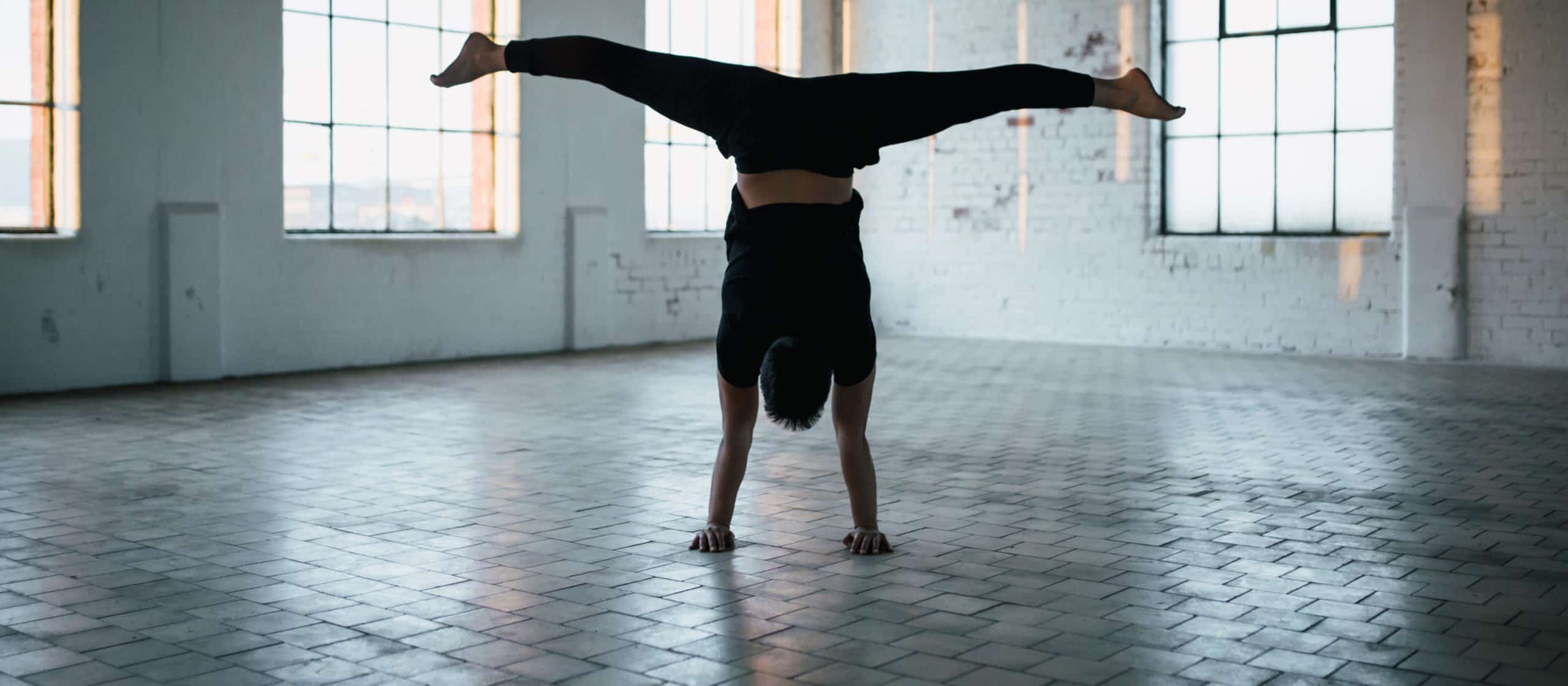The anatomy of the handstand is complex, and an area often overlooked is the elbows. This hinge joint has a lot of genetic variation in the population, which naturally leads to a variety of form compensations to find a good handstand hold. Combine this with the load-bearing demands from handbalancing, elbows can be prone to overtraining or injury. But there’s no need to worry, from our experience coaching our students, we have advice on how to address your arms’ anatomical quirks and some injury prevention measures for your elbows.
Anatomical variance in handstands
Do your elbows hyperextend? Is it okay for your arms to bear weight like that? Or can you not straighten your arms all the way, no matter how hard you try? Do you need straight arms for handstands? These type of questions come up frequently, but rest assured a lot of these quirks don’t cause problems until the upper high level. On the flip side of the coin, these kinds of weird structural anomalies are sometimes what can give someone a unique flavour to their handstand.
There is a variation of elbows. Specifically in reference to a person’s “carrying angle”. Essentially, it’s the angle of your forearm relative to your upper arm. To check your own carrying angle, hang your arm hanging down by your side, completely neutral. Then you rotate the forearm so the palm is facing forwards without moving your arm or shoulder in any significant way. There will generally be a small angle, 5-15 degrees, but some with a larger carrying angle, where the hand moves far away from your thigh, have what is referred to in the medical world as cubital valgus.

Häggström, Mikael (2014). “Medical gallery of Mikael Häggström 2014”. WikiJournal of Medicine 1 (2). DOI:10.15347/wjm/2014.008. ISSN 2002-4436. Public Domain.
What we have observed anecdotally is those who have cubital valgus might have a visually different lower line, but tend to learn press to handstand quickly and, at a high level, achieve aesthetically striking Mexican handstands. We believe it could be contributed to the elbow angle lessening the degree of shoulder flexion needed.
We have also observed, and experienced first-hand, the adaptations that occur over time with full elbow extension. Mikael used to have elbows that would hyper-extend, whereas Emmet’s arms were quite stiff and wouldn’t fully lock out when he began to hand balance. Over the years Mikael’s elbow stiffened up, and now stacks vertically, and Emmet’s elbows have gained mobility to stack vertically and even slightly hyper-extend. Now this is not a guarantee your joints will do the same, as Emmet specifically conditioned his hyper-extension to help his one-arm handstand, but the SAID principle applies to joints just as it does to the rest of your body. So in training handstands, over time your body will reorganize itself to optimally achieve the balance you seek.
Elbow niggles, overuse, and injury prevention
When learning to handstand or pushing your handbalancing practice to the next level, like with the one-arm, it’s common to experience some discomfort in the wrists, forearms and elbows. Keep in mind that in addition to the load from stacking your bodyweight on your arms, you can also experience elbow pain from hand injuries, as your fingers’ flexor and extensor muscles originate near the elbow.
Recognizing the difference between DOMS (delayed onset muscle soreness) and overuse is an important skill. Giving yourself permission to skip a day of training here and there is a valuable mindset to cultivate. Taking a few days off here and there to recover, or supplementing your handbalancing with wrist and forearm conditioning (like in our free Grip program), is better than ignoring first signs of overuse and then having to deal with tendonitis for a few months.
One way we have our students avoid overuse is to alternate using blocks, paralletes, and the floor for handbalancing. We have found one cause of tendonitis and overuse injuries comes from repeating the same stress on the body without adequate recovery. Blocks and paralletes provide a different stress. With this approach you’ll not only avoid overuse, but strengthen complimentary muscle groups in your forearm which can further steel you against injury. Another additional benefit to blocks and paralletes is they will challenge your balance differently, especially if you correct your balance by pushing hard through your fingertips, forcing you to learn to rebalance in different ways.

